Advanced wireless telemetry system for real-time surface readout during drill stem testing
Sulaiman Sidek A , Woo Hsuan Thai A , Maharon Bin Jadid A , Shangkar Venugopal B , Suresh Marimuthu B , Josmar Haddad B and Kevin Fink BA Petronas
B Halliburton
The APPEA Journal 51(1) 95-108 https://doi.org/10.1071/AJ10005
Published: 2011
Abstract
Drill stem testing (DST) provides reservoir information that helps evaluate the potential of a new field. The data includes permeability, total skin (damage) and formation pressure, but these calculations are possible only if the build-up period is sufficiently long to attain middle time regime. The best technique for determining the length of flowing and build-up periods required is to monitor real-time bottomhole pressure (BHP) at surface.
Traditionally, BHP and temperature data have been recorded using downhole memory gauges, but the data could only be retrieved after the test had concluded and the DST bottomhole assembly (BHA) was pulled out of hole. Wireline surface read-out (SRO) was used in the next evolution of the applicable technology. This method lowered a wireline retrieval tool into the BHA during the build-up periods to retrieve real-time data from downhole gauges. This technique worked satisfactorily during build-up periods but was difficult to achieve during flowing periods, especially at high rates and with sand or solid production.
Now, a real-time downhole data acquisition solution that uses the newest generation of an acoustic wireless telemetry system has been developed. This system allows data transmission by the tubular wall using acoustic energy during flowing and build-up periods, thus providing real-time SRO throughout the test to facilitate quick decisions and troubleshooting solutions. With the acoustic wireless telemetry system, wireline intervention during DST is not required, thus eliminating inherent risks and costs of such operations.
A project undertaken by PETRONAS and a major service company using this system was successfully implemented on jack-up rigs in Malaysia. This paper discusses the challenges and step-by-step improvements made to enable these jobs to successfully meet the sought-after goals.
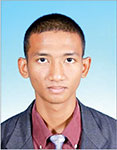
Sulaiman Sidek graduated from the University of Technology, PETRONAS, in 2005 and began his career in the well testing division with PETRONAS Carigali in 2006. He spent four years in the field and has been involved and led numerous well testing operations in various types of reservoir environments (i.e. clastic, carbonate and fractured basement), in Malaysia, Pakistan, Turkmenistan, Uzbekistan and Vietnam in land and offshore operations, HPHT, hydraulic stimulation and standard well testing projects. He is based in Kuala Lumpur and continues his contribution to the well testing division by providing planning and job execution for domestic and international PETRONAS operations. Member: SPE, Board of Engineers, Malaysia (BEM). sulaiman_sidek@petronas.com.my |
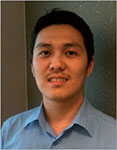
Scott Woo began his career with PETRONAS Carigali in 2003 with production operations and later moved to well testing operations. Over the years he has led numerous well testing operations in various types of reservoir environments, such as clastic, carbonate and fractured basement reservoirs in Malaysia and Vietnam. After spending six years in the field in land and offshore operations, HPHT and standard well testing projects, he was promoted to senior production technologist overseeing brownfield enhancement and redevelopment. Woo graduated from the University of Malaya (UM) in 2003 as a chemist, and has an MSc in petroleum engineering from the University of Herriot-Watt in collaboration with the University of Technology, PETRONAS in 2007. Member: SPE. woohsuanthai@petronas.com.my |

Maharon Bin Jadid graduated with BSc (Hons) in chemical engineering from the University Malaya in 1976. He worked for Shell (SSB/SSPC) as a production technologist from 1976. He was cross-posted to Norke Shell, Stavanger, Norway in 1983–5 and then to Shell Expro, Aberdeen Scotland from 1987–9. In 1992 he joined Crest Petroleum as general manager E&P and in 1999 joined Foxboro (M) Sdn. Bhd. as technical adviser until 2002. He was made asset adviser for PETRONAS Carigali for the Dulang asset from 2002 until 2004. He joined PETRONAS Carigali Sdn. Bhd. in KLCC in 2004. Since joining PETRONAS he has progressed from staff engineer, to principal engineer and finally to custodian production technology. maharonjadid@petronas.com.my |
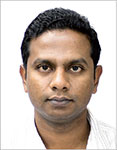
Shangkar Venugopal began his career on a gas turbine project in 2002 with Alstom as a trainee while pursuing a BE degree in mechanical engineering at the University of Technology, Malaysia (UTM). Upon graduating, he joined Halliburton in 2008 as a field engineer supporting testing and subsea operations in central Asia. He was involved in numerous well testing operations offshore, running data acquisition services on various types of rigs covering Malaysia and Vietnam waters. He is the project coordinator and focal point for PETRONAS, covering all well testing operations in Malaysia. His responsiblities include the planning of well testing jobs, initiating design of service, providing technical consultations to clients and managing the resources to ensure all required equipment and personnel are provided in a timely manner. Shangkar has been involved in the deployment of the first advanced wireless telemetry system in the country as presented in the paper. Member: SPE, NACE International, Board of Engineers, Malaysia (BEM). Shangkarnaidu.Venugopal@halliburton.com |
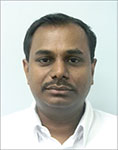
Suresh Marimuthu began his career as a field engineer with Halliburton in 1995, supporting Asia Pacific testing and subsea operations, running data acquisition systems, later running downhole tools and subsea operations. He has spent six years in the field while exposed to land and offshore operations, HPHT and standard well testing projects for various clients in the region. He was then promoted and moved into a senior technical professional position for the Asia Pacific region. In 2002, Suresh served as service coordinator for Malaysia operations. Later, he was transferred to the regional office in Kuala Lumpur as technical advisor. He was promoted as country manager in 2010, overseeing southeast Asia and central Asia operations. Suresh.marimuthu@halliburton.com |
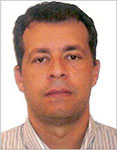
Josmar Haddad began his career as a field engineer with Halliburton in Brazil offshore operations in 1996, running data acquisition systems. After field exposure, he played a role as offshore coordinator for the well testing operations division, working as a liaison between the customer representative and the service companies, providing pre-job planning, job execution, and lessons-learned sessions. He progressed to various supervisory and management positions in Brazil. In 2005, he was transferred to Carrollton, Texas, to serve as the data acquisition global adviser. With his expertise he now provides internal and external support for all data acquisition needs. Member: SPE. Josmar.haddad@halliburton.com |
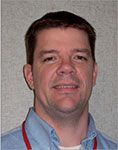
Kevin Fink began his career in 1990 as a design engineer with Halliburton in Duncan, Oklahoma, developing surface and downhole data acquisition systems. In his 20-year career he has held various positions in engineering, designing systems for downhole telemetry, sub-sea control, surface well testing, and data acquisition. He is now the technology team leader for data acquisition in Halliburton’s Testing and Subsea Technology group in Carrollton, Texas, supporting the development of surface and downhole data acquisition and telemetry systems. Kevin.Fink@halliburton.com |


